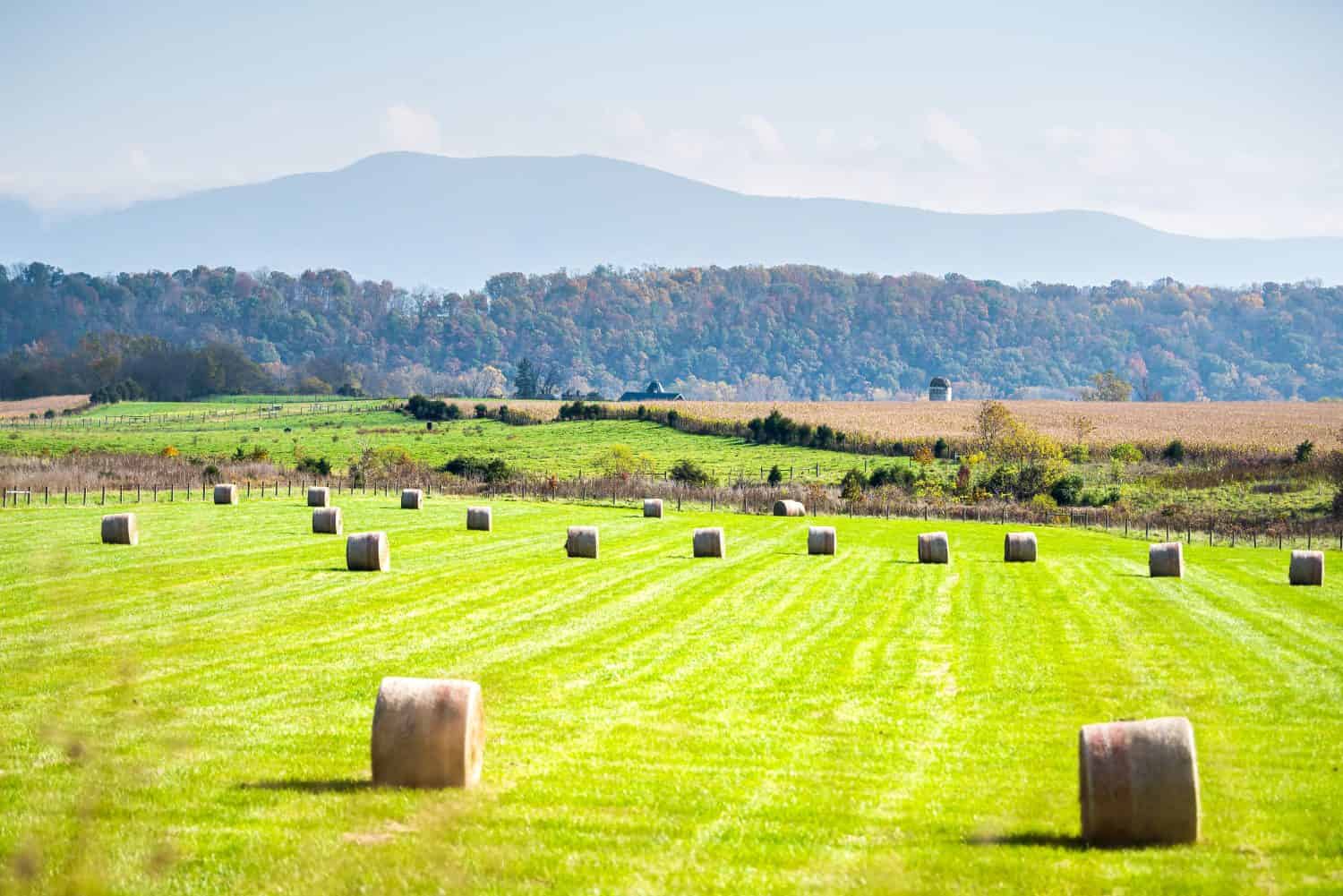Virginia has a robust agricultural history dating back thousands of years before European settlers arrived. Although corn has always featured prominently, Virginia can grow many other valuable crops. Most of these are grown primarily for human consumption or livestock feed, but many have many applications. In this article, we’ll outline Virginia’s top 10 most valuable crops based on USDA/NASS (USDA – National Agricultural Statistics Service) data for 2022.
1. Corn – $397,460,000
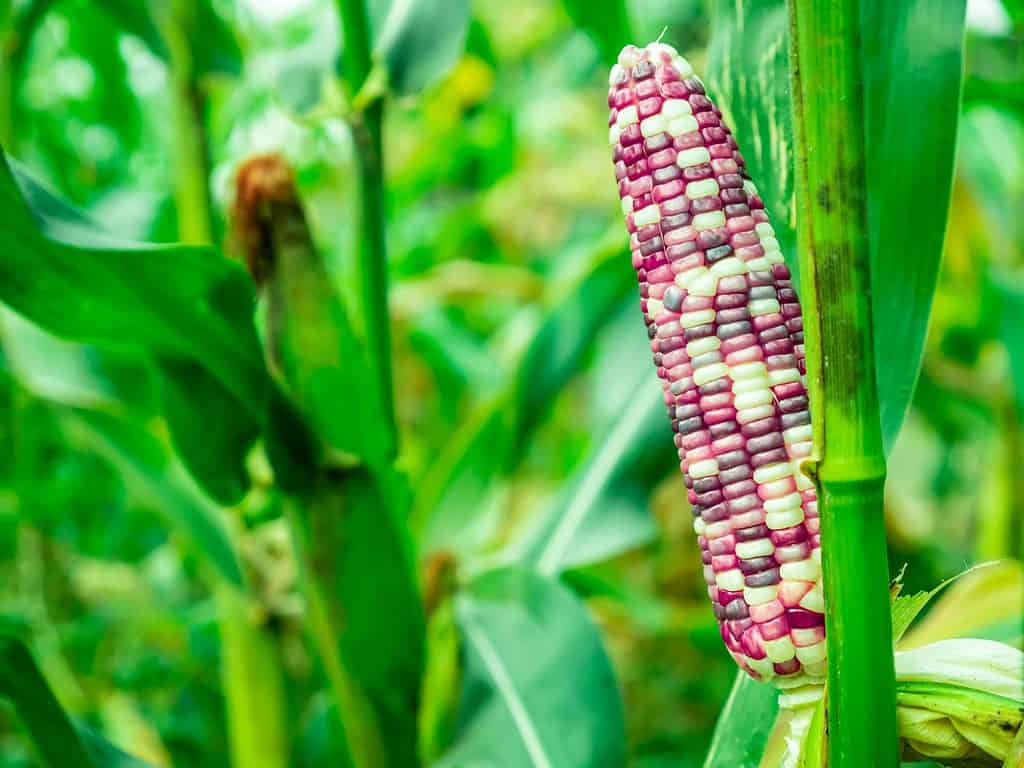
The most valuable crop in Virginia is corn.
©janezudza/Shutterstock.com
Corn ranks first on the list of the most valuable crops in Virginia. It is primarily grown in the state for animal feed and human consumption, though it also produces corn oil, cornmeal, and alcoholic beverages. It grows in dense rows with leafy stalks and kernels or seeds. Six primary varieties exist dent corn, flint corn, flour corn, pod corn, popcorn, and sweet corn.
In 2022, the production value of corn in Virginia came to $397,460,000, amounting to 56,780,000 bushels. The state accounted for approximately 0.41% of the national U.S. corn yield of 13.7 billion bushels.
For 2023, the forecasted production value of corn is 57.8 million bushels, an increase of 2% from 2022. The expected yield per acre is 154 bushels, down 13 bushels from the previous year.
2. Soybeans – $352,641,000

Virginia’s 2022 soybean yield came to approximately 25 million bushels.
©branislavpudar/Shutterstock.com
The soybean is second on the list of the most valuable crops in Virginia. As a crop, soybeans can be used as fermented or unfermented food, cooking oil, livestock feed, biodiesel, and industrial products.
In 2022, the production value of soybeans in Virginia came to $352,641,000, amounting to 25,010,000 bushels. The state accounted for approximately 0.58% of the national U.S. soybean yield of 4.28 billion bushels.
For 2023, the forecasted production value of soybeans is 22.2 million bushels, which is a decrease of 11% from 2022. The expected yield per acre is 39, down 2 bushels from the previous year.
3. Hay – $333,540,000

Virginia’s third most valuable crop is hay. In 2022, the statewide yield came to approximately 2.2 tons.
©alexei_tm/iStock via Getty Images
Hay is the third most valuable crop in Virginia. Farmers primarily grow it as feed for animals. Generally, hay comprises dried grasses and similar vegetation drying before harvesting.
In 2022, the production value of hay in Virginia came to $333,540,000, amounting to 2,196,000 tons. The state accounted for approximately 1.95% of the national U.S. hay yield of 112.8 million tons.
2021 Virginia produced only 2.09 million tons of hay, while the U.S. produced 120.2 million tons. This is a decrease from 2020 production values in Virginia and nationally, which amounted to 2.71 and 126.8 million tons, respectively.
4. Cotton – $96,389,000
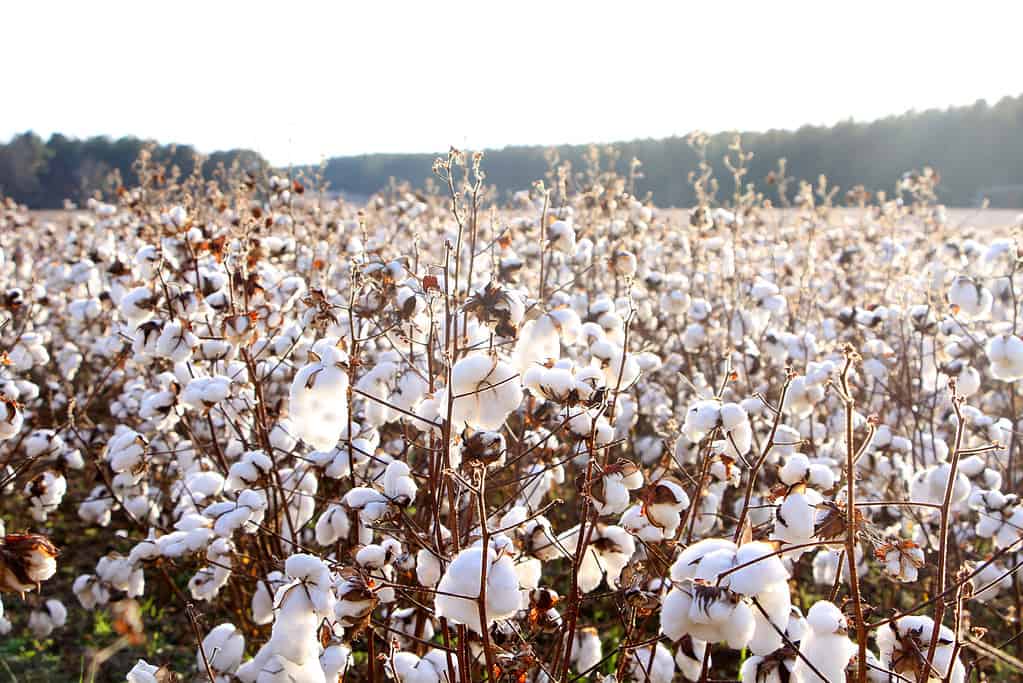
In 2022, Virginia produced 212,000 480-pound bales of cotton.
©elan7t50/iStock via Getty Images
Cotton is the fourth most valuable crop in Virginia. Farmers primarily grow it for textiles, but it is also helpful in bookbinding and coffee filters.
In 2022, cotton production value in Virginia came to $96,389,000, amounting to 212,000 480-pound bales. The state accounted for approximately 1.44% of the national U.S. cotton yield of 14.7 million 480-pound bales.
In 2021 Virginia produced only 171,000 480-pound bales of cotton while the U.S. produced 17.5 million 480-pound bales. This is an increase from 2020 production values in Virginia and nationally, which amounted to 127,000 and 14.6 million bales, respectively.
5. Wheat – $82,110,000

Wheat is among the most valuable crops in Virginia. In 2022, the statewide yield came to 10.2 million bushels.
©Jack Lambert/Shutterstock.com
Among the most valuable crops in Virginia is wheat, ranking fifth on the list. Farmers typically grow wheat for human consumption as it can be milled into flour for various baking purposes.
In 2022, the wheat production value in Virginia came to $82,110,000, amounting to 10,200,000 bushels. The state accounted for approximately 0.62% of the national U.S. wheat yield of 1.65 billion bushels.
In 2021, Virginia produced only 8.04 million bushels of wheat, while the U.S. had just under 1.65 billion bushels. This is an increase from 2020 production values in Virginia, which amounted to 7.8 million bushels, and a decrease nationally, which amounted to 1.83 billion bushels.
6. Tobacco – $69,693,000
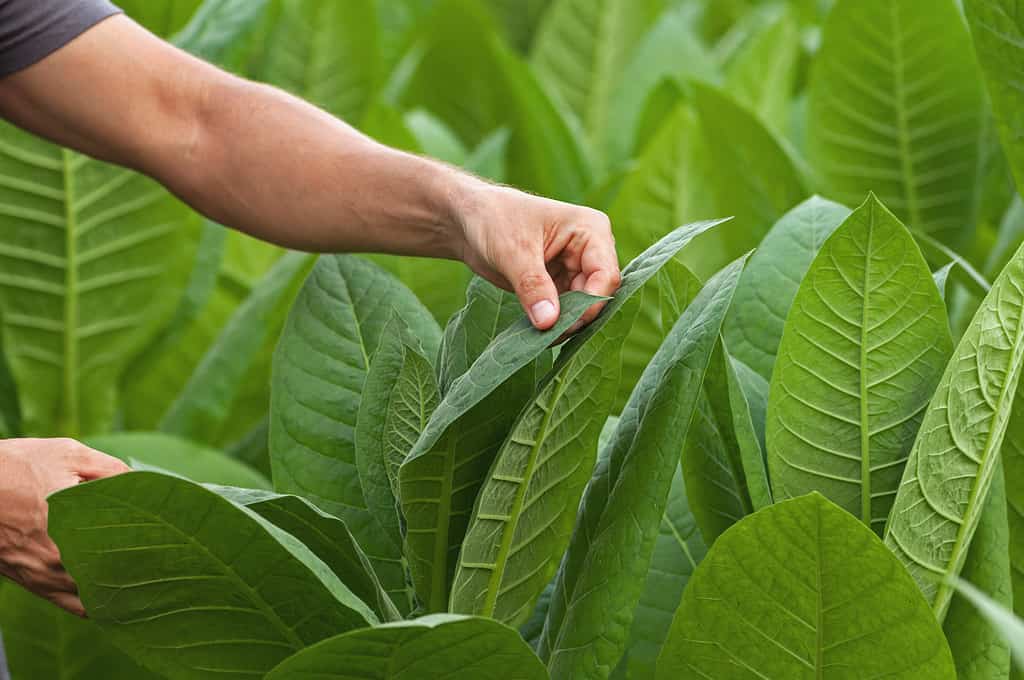
Tobacco is Virginia’s sixth most lucrative crop.
©Tatyana Kalmatsuy/iStock via Getty Images
Among the most valuable crops in Virginia is tobacco, which takes sixth place. Tobacco is mainly grown for recreational use in cigarettes, cigars, and pipes. The leaves are a valuable part of the plant, but they contain nicotine, which is addictive for most people.
In 2022, the production value of tobacco in Virginia came to $69,693,000, amounting to 29,870,000 pounds. The state accounted for approximately 6.68% of the national U.S. tobacco yield of 447.4 million pounds.
In 2021, Virginia produced 34 million pounds of tobacco, while the U.S. produced 458.1 million pounds. This is an increase from 2020 production values in Virginia and nationally, which amounted to 24.4 and 372.9 million pounds, respectively.
7. Apples – $55,311,000

The second most popular fruit in the U.S. is the apple, Virginia’s seventh most valuable crop.
©lukasz1981/iStock via Getty Images
Apples rank seventh among the most valuable crops in Virginia. They also rank as the second most popular fruit in the United States, ranking just behind bananas. They can be consumed in various ways, including fresh and canned or as juice, cider, vinegar, jelly, applesauce, and apple butter.
In 2022, the production value of apples in Virginia came to $55,311,000, amounting to 184,500,000 pounds. The state accounted for approximately 1.89% of the national U.S. apple yield of 9.78 billion pounds. In 2021, the United States produced 9.93 billion pounds of apples, a decrease from its 2020 production value of 10.29 billion pounds.
8. Peanuts – $35,028,000
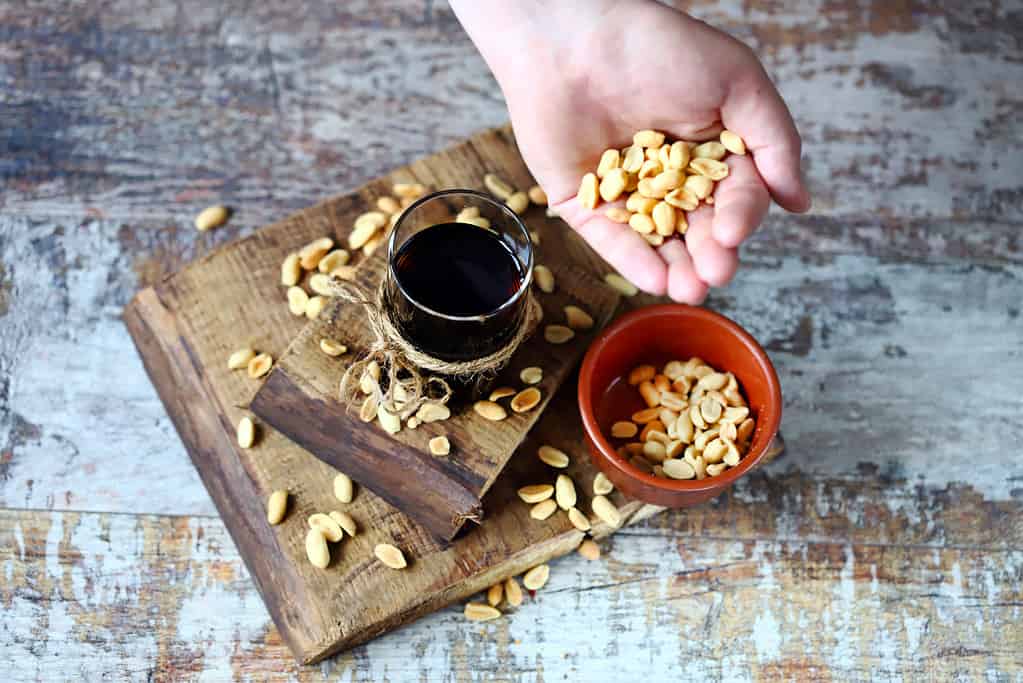
In 2022, Virginia produced 126 million pounds of peanuts.
©Oksana Shyriaieva/iStock via Getty Images
Among the most valuable crops in Virginia is the peanut, ranking eighth on the list. Humans consume peanuts in several ways, including in snack form, as peanut oil and peanut butter, and in soups or desserts.
In 2022, the production value of peanuts in Virginia came to $35,028,000, amounting to 126,000,000 pounds. The state accounted for approximately 2.26% of the national U.S. peanut yield of 5.57 billion pounds.
For 2023, the forecasted production value of peanuts in Virginia is 133 million pounds, an increase of 6% from 2022. The expected yield per acre is 4,600 pounds, up 100 pounds from the previous year.
9. Pumpkins – $11,899,000

Virginia produced a total of 546,000 CWT of pumpkins in 2022.
©Kristen Prahl/iStock via Getty Images
Pumpkins take ninth place on the list of the most valuable crops in Virginia. Farmers mainly grow pumpkins for human consumption, though many Americans buy them to carve jack-o’-lanterns for Halloween.
In 2022, the production value of pumpkins in Virginia came to $11,899,000, amounting to 546,000 CWT (hundredweight). This is a 34% decrease from the state’s 2021 production value of approximately 73 million pounds.
The top six pumpkin-producing states in the United States accounted for more than one billion pounds of the national pumpkin yield. Illinois produced more than the other five states combined, with a total yield of 634 million pounds.
10. Barley – $3,010,000
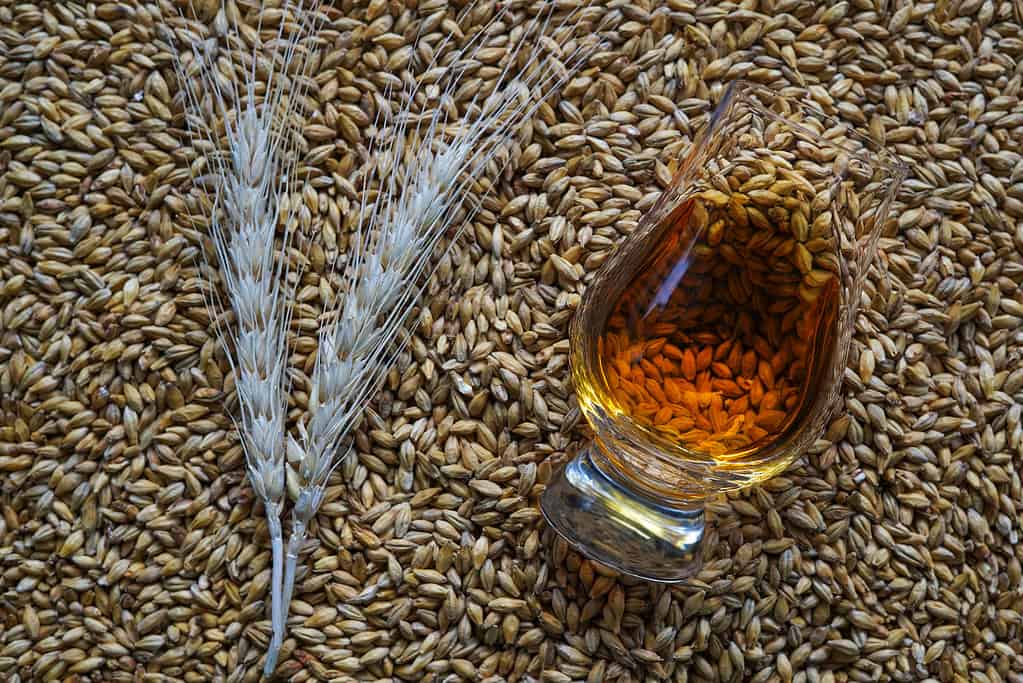
In 2022, Virginia produced 602,000 bushels of barley.
©13threephotography/iStock via Getty Images
Barley ranks last on the list of Virginia’s top ten most valuable crops. Humans consume barley in many ways, including soups, breads, health products, and alcoholic beverages. Farmers also use it as animal fodder.
In 2022, the production value of barley in Virginia came to $3,010,000, amounting to 602,000 bushels. The state accounted for approximately 0.35% of the national U.S. barley yield of 174.33 million bushels.
In 2021, Virginia produced 525,000 bushels of barley, while the U.S. produced 120.09 million bushels. This is an increase from 2020 production values in Virginia, which amounted to 441,000 bushels, and a decrease nationally, which amounted to 170.91 million bushels.
Summary Table of the 10 Most Valuable Crops in Virginia
| Rank | Crop | Value |
|---|---|---|
| 1 | Corn | $397,460,000 |
| 2 | Soybeans | $352,641,000 |
| 3 | Hay | $333,540,000 |
| 4 | Cotton | $96,389,000 |
| 5 | Wheat | $82,110,000 |
| 6 | Tobacco | $69,693,000 |
| 7 | Apples | $55,311,000 |
| 8 | Peanuts | $35,028,000 |
| 9 | Pumpkins | $11,899,000 |
| 10 | Barley | $3,010,000 |
Thank you for reading! Have some feedback for us? Contact the AZ Animals editorial team.

